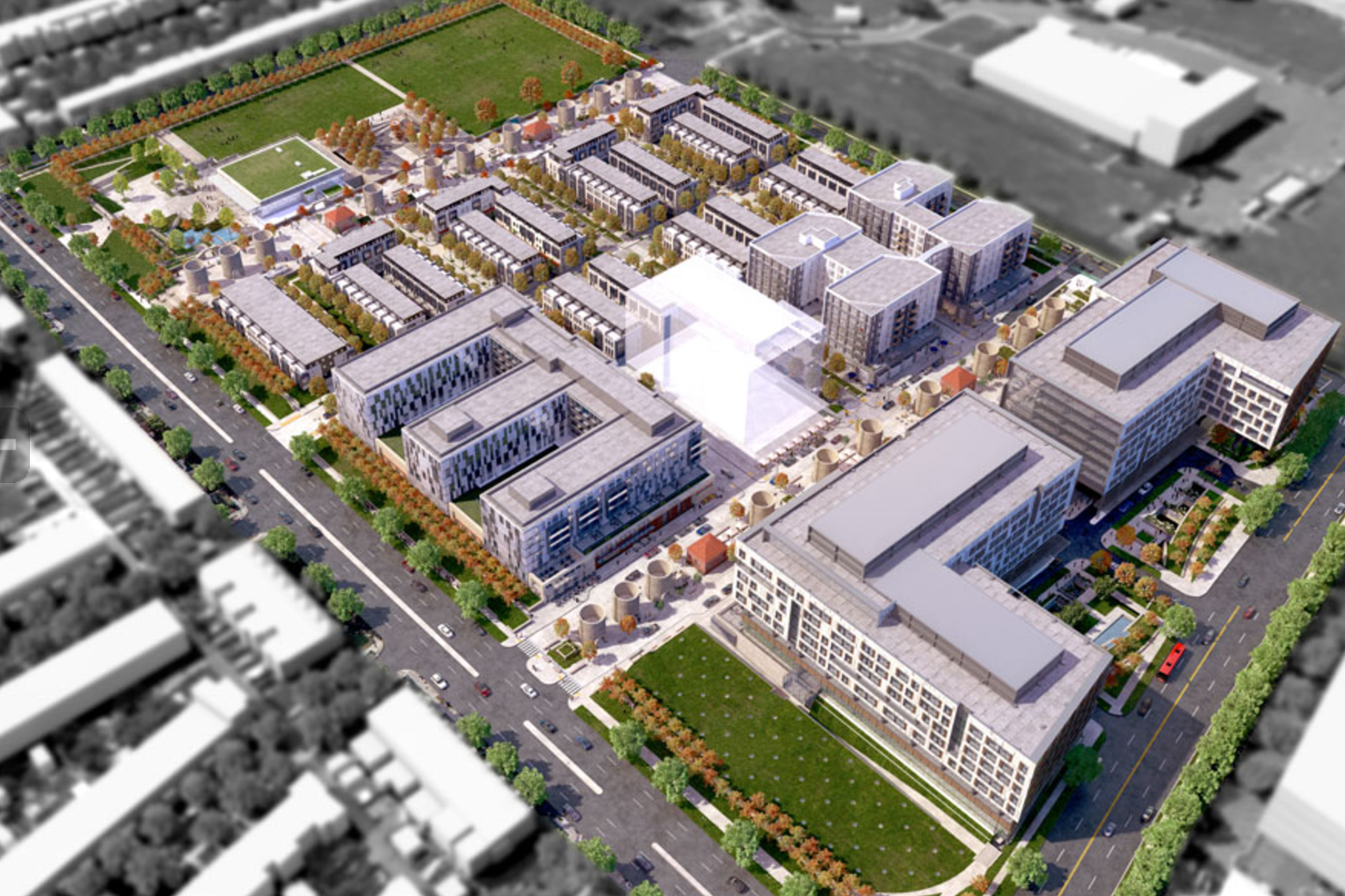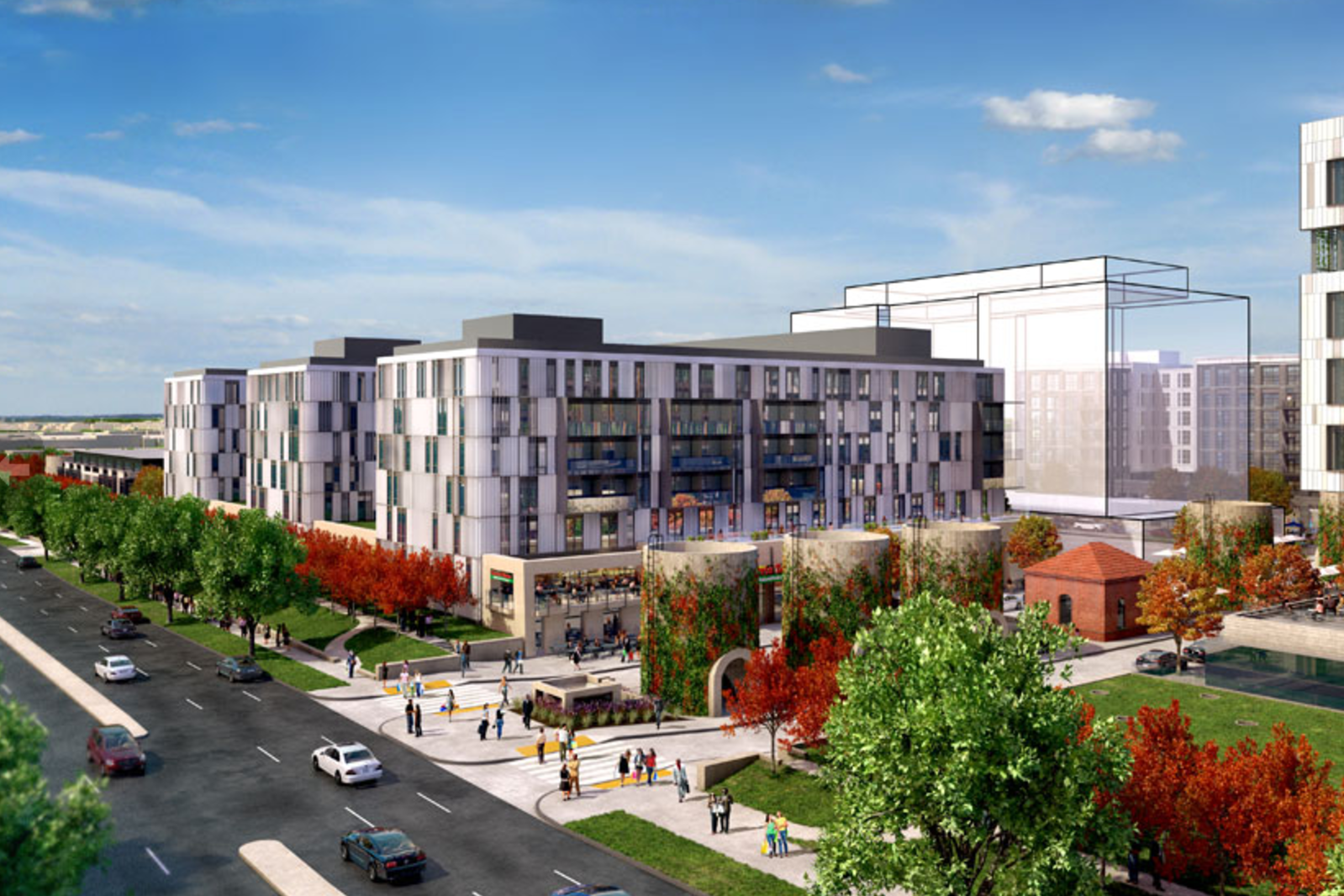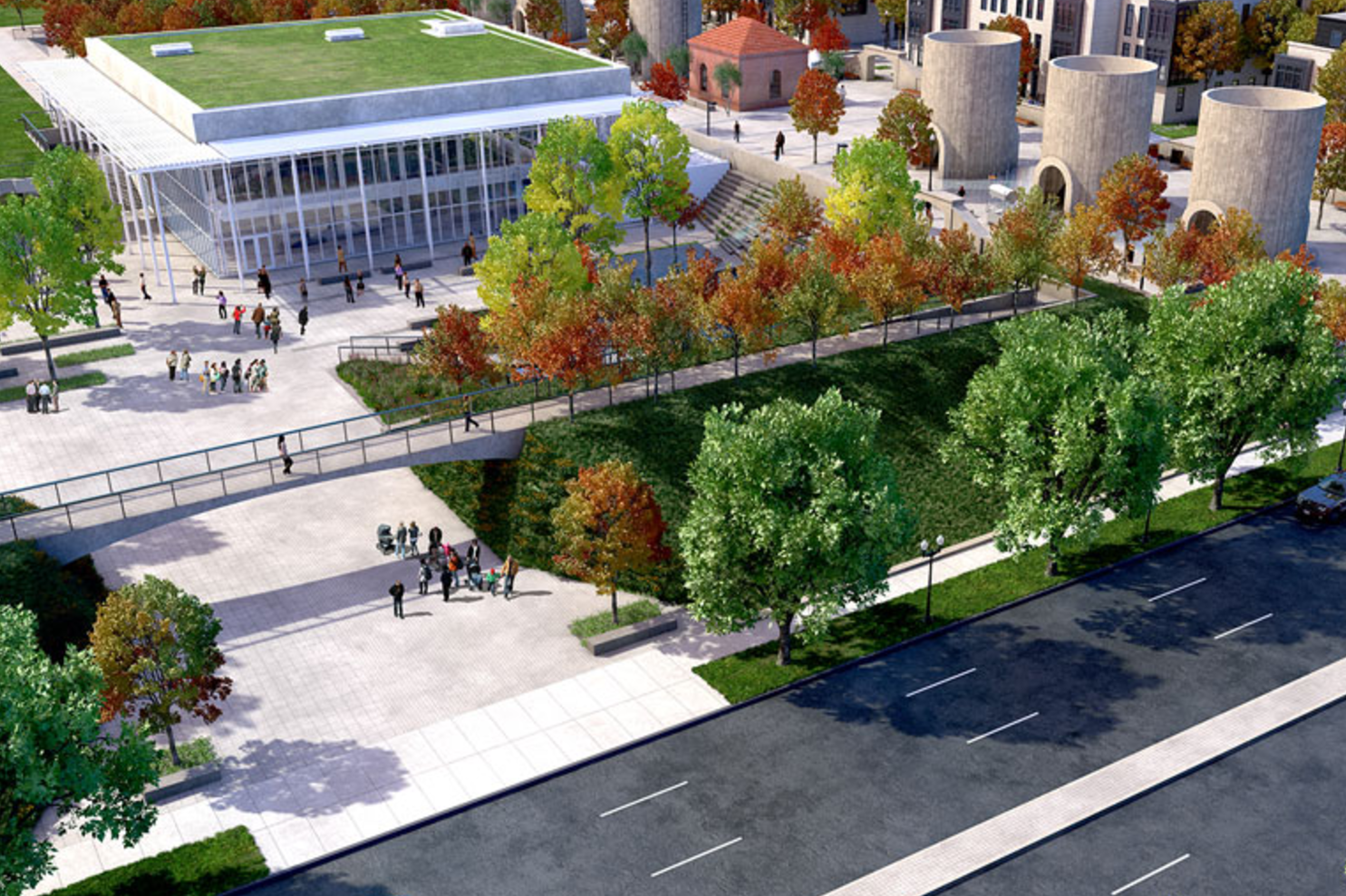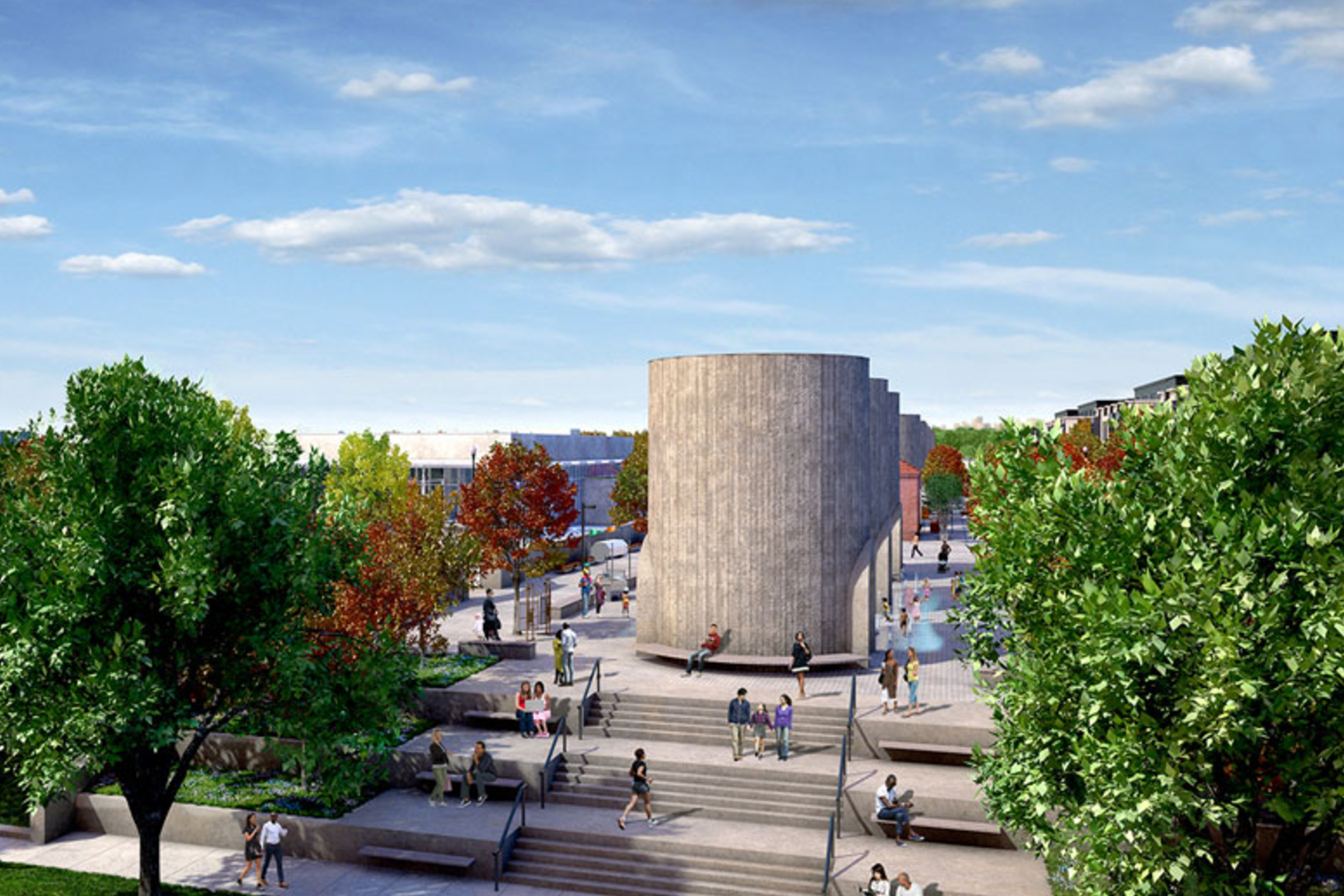Groundbreaking at the McMillan Sand Filtration Site. Elliot Carter photos
Mayor Muriel Bowser spoke today at the groundbreaking of the McMillan Sand Filtration Site. The redevelopment project will transform the neighborhood east of Howard University with the addition of 655 new housing units, a park, commercial space, and expanded offices for the nearby Children's Hospital.
The McMillan Sand Filtration Site was built at the turn of the century to purify the Washington Aqueduct. Water percolated through four feet of sand in 25 underground vaults to filter out undesirables. The iconic silos were used to store replacement sand above ground.
The site was obsolete by the late 20th century and declared surplus in 1986. It has sat vacant since then, fenced off and waiting for a new purpose.
Sand storage bin.
Many of the historic elements of the old water facility will be retained. The site's landscape architecture plan will incorporate all 20 of the sand silos, four of the regulator houses and 12 stationary sand washers.
Unfortunately most of the underground vaults are going to be lost in the redevelopment project. Their century-old concrete walls don't have rebar reinforcing bars and could collapse. However, a portion of vault #28 is being preserved, reinforced, and will be part of a "walking museum" of the old filtration plant.
Underground vault #14 will also be preserved in its entirety, but planners haven't settled on what to use it for. According to Joaquin McPeek of the Office of the Deputy Mayor for Planning and Economic Development, "We have not established a use for Cell 14 at this time. It is under DC Water control for a few more years until the First Street Tunnel Project is complete. We will then go through a community engagement and entitlement process to establish its use."
Sand washing bin.
Construction is set to begin in the summer of 2017. Architectural images from Vision McMillan Partners are included below.









